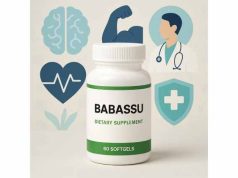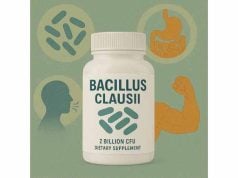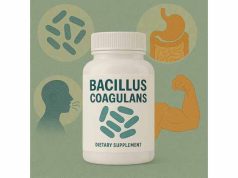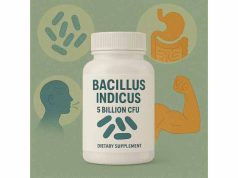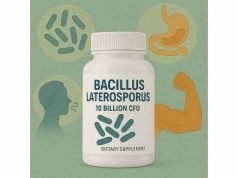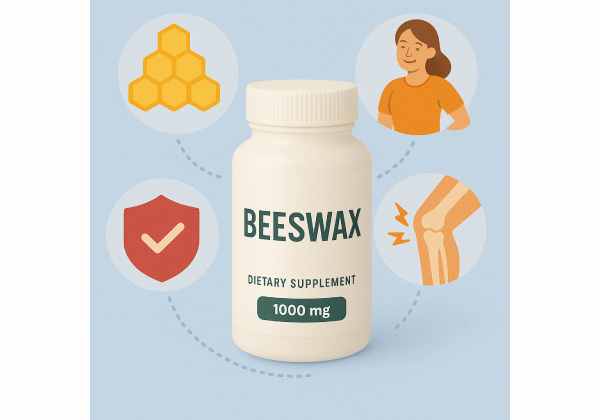
Is beeswax just for candles? Surprisingly, this natural product from honeybees is packed with practical, cosmetic, and wellness benefits. Beeswax isn’t just a crafting staple—it’s valued for its skin-protective, anti-inflammatory, and soothing properties, making it a favorite in balms, salves, and even edible products. Used for centuries in folk medicine and beauty routines, beeswax has found its way into everything from lip balms and creams to food wraps and natural supplements. In this comprehensive guide, you’ll discover what beeswax really is, how it’s produced, its science-backed benefits, diverse uses, recommended dosages, and safety essentials. Whether you’re curious about DIY skincare, natural remedies, or supplementing, this article has you covered.
Key Takeaways
- Beeswax acts as a natural skin barrier, protecting and moisturizing without clogging pores.
- It’s widely used in lip balms, creams, food wraps, and even edible supplements for digestive support.
- Provides mild anti-inflammatory and antibacterial benefits, supporting wound healing.
- Well-tolerated for most, but allergic reactions can occur in those sensitive to bee products.
- Ensure purity by choosing unbleached, cosmetic- or food-grade beeswax for health and topical use.
Table of Contents
- Beeswax Unveiled: What It Is and How Honeybees Produce It
- Beeswax’s Biological Properties and How It Works in Wellness and Skincare
- Top Benefits and Evidence-Based Uses of Beeswax
- Beeswax Safety: Allergies, Tolerability, and Interactions
- Dosage, Application, and Best Practices for Beeswax Use
- Frequently Asked Questions About Beeswax
Beeswax Unveiled: What It Is and How Honeybees Produce It
Beeswax is one of nature’s most fascinating substances. Created by worker honeybees (Apis mellifera), it forms the literal foundation of the hive—serving as the building material for honeycomb cells that house honey, pollen, and developing bee larvae. But how is beeswax made, and what gives it its unique structure and utility?
The Origins of Beeswax
- Production: Beeswax is secreted by young worker bees from special abdominal glands. These glands transform the sugars in honey into thin, translucent scales of wax.
- Collection: Bees scrape off these wax scales with their legs and chew them, softening and mixing the wax with saliva and enzymes before building honeycomb.
- Structure: Fresh beeswax is nearly white; it takes on a golden or amber hue as it absorbs pollen, propolis, and honey from the hive environment.
What’s in Beeswax?
Beeswax is a complex mix of:
- Long-chain fatty acids
- Monoesters, diesters, and hydrocarbons
- Minor components like propolis, pollen, and natural aromatic compounds
This unique blend makes beeswax solid at room temperature but easily moldable and able to melt at around 62–64°C (144–147°F).
Harvesting and Purifying Beeswax
- Harvesting: Beekeepers collect honeycombs and separate beeswax by melting and straining out impurities (bee parts, propolis, etc.).
- Purification: The wax is filtered, sometimes bleached, and formed into blocks, pellets, or pastilles for use in cosmetics, food, crafts, and supplements.
- Grades: Cosmetic-grade and food-grade beeswax are recommended for all health and skincare applications.
Why Beeswax Is So Versatile
Beeswax’s structure makes it:
- Water-repellent but breathable—ideal for skin protection
- Flexible, yet able to hold its shape—perfect for candles and balms
- Non-toxic and hypoallergenic for most users
Traditional and Modern Uses
- Historically: Used in wound dressings, embalming, art, and waterproofing
- Today: Essential in lip balms, creams, ointments, food coatings, dental waxes, and sustainable wraps
Beeswax’s journey from hive to home is as fascinating as its impressive list of uses and benefits. Next, let’s see what science reveals about how beeswax supports skin health, wellness, and more.
Beeswax’s Biological Properties and How It Works in Wellness and Skincare
The secret to beeswax’s popularity isn’t just tradition—it’s the science behind its gentle, effective action on skin and in wellness. Here’s a closer look at what makes beeswax so unique in the world of natural remedies and supplements.
A Natural Barrier and Moisturizer
Beeswax forms a semi-permeable layer on the skin:
- Seals in moisture without suffocating the skin, unlike many petroleum-based products.
- Prevents trans-epidermal water loss (TEWL), keeping skin soft, smooth, and hydrated.
- Doesn’t clog pores—making it suitable for most skin types, even sensitive and acne-prone.
Anti-Inflammatory and Healing Action
Beeswax contains bioactive compounds (like flavonoids and propolis residues) that provide:
- Mild anti-inflammatory effects, soothing irritation, redness, and inflammation
- Support for wound healing—beeswax helps create an optimal environment for tissue repair and reduces discomfort from minor cuts or burns
- Protects skin against environmental toxins and bacteria, due to its mildly antimicrobial nature
Antibacterial and Antioxidant Benefits
- Beeswax helps inhibit the growth of certain bacteria, supporting clean healing of wounds and preventing infection in minor skin issues.
- Natural antioxidants in beeswax may help fight free radicals, contributing to anti-aging effects in cosmetic products.
Internal (Edible) Uses and Digestive Health
While most benefits are topical, edible beeswax (in very small, food-grade amounts) may:
- Act as a gentle, natural fiber for the gut, supporting regularity
- Form part of protective edible coatings for cheese, fruit, or supplements
- Offer trace bioactive compounds with mild anti-inflammatory activity
Compatibility and Stability
- Hypoallergenic for most: Well-tolerated by sensitive skin types
- Stable and shelf-safe: Resists rancidity, making it an excellent natural preservative for balms and ointments
Why Beeswax Works So Well in Formulations
- Blends smoothly with oils and butters, locking in their nourishing properties
- Adds body, texture, and stability to creams, lip balms, and salves
- Holds essential oils and active ingredients in place for prolonged action
Summary of Science-Backed Mechanisms
- Locks in skin moisture
- Calms inflammation
- Protects against environmental stressors and minor infection
- Acts as a carrier for beneficial plant extracts
Beeswax’s power is rooted in its structure and natural synergy with skin and other ingredients—making it more than just a “filler” in your favorite products. Next, we’ll detail the most compelling health and cosmetic benefits, from wound healing to natural food protection.
Top Benefits and Evidence-Based Uses of Beeswax
Beeswax isn’t just a folk remedy—it’s backed by modern research and embraced by formulators for its impressive versatility and safety. Here’s a detailed look at how beeswax can benefit you, plus real-world uses that go beyond candles and crafts.
1. Skin Barrier, Moisture Retention, and Softening
Beeswax is a star ingredient in natural skincare:
- Forms a breathable barrier, locking in hydration without clogging pores
- Soothes dry, cracked, or chapped skin—ideal for lips, hands, elbows, and feet
- Works as a base for lotions, creams, and balms, enhancing texture and shelf life
2. Anti-Inflammatory, Healing, and Antimicrobial Effects
- Reduces redness and calms inflammation in irritated skin
- Promotes wound healing—helpful for minor cuts, burns, and abrasions
- Offers mild antibacterial properties, aiding in the prevention of infection
3. Lip Care and Cosmetic Uses
- Beeswax is the mainstay of natural lip balms, glosses, and solid perfumes.
- Protects delicate lip skin from wind, sun, and dehydration.
- Blends perfectly with oils, butters, and essential oils for flavor, scent, and enhanced care.
4. Edible and Digestive Benefits
- Food-grade beeswax is used as a coating for cheese, fruit, and some supplements.
- In small, controlled amounts, edible beeswax acts as a natural fiber to gently support regularity.
- Protective coating for tablets/capsules aids in safe delivery of sensitive nutrients.
5. Home, Wellness, and Environmental Uses
- Natural, non-toxic candles—clean burning with a mild honey scent, no petrochemicals
- Eco-friendly food wraps and containers—reusable, breathable, and biodegradable alternatives to plastic
- Soothes minor scrapes, insect bites, or burns in first aid salves and ointments
6. Joint, Muscle, and Respiratory Salves
- Beeswax acts as a carrier for herbal actives, holding them on the skin for sustained absorption
- Used in rubs and balms for muscle relief, chest comfort, and aromatherapy
Who Benefits Most from Beeswax?
- Those with dry, sensitive, or easily irritated skin
- People seeking natural, chemical-free personal care products
- Individuals interested in sustainable living and reducing plastic waste
- DIY enthusiasts making their own balms, salves, or food wraps
Summary Table: Popular Beeswax Uses
| Use | How Beeswax Helps |
|---|---|
| Lip balm, hand cream | Seals in moisture, soothes irritation |
| Wound/first aid salves | Promotes healing, prevents infection |
| Edible coatings | Protects, acts as mild dietary fiber |
| Candles, wraps, crafts | Clean, natural, safe for home use |
Beeswax’s uses continue to expand as more people rediscover its natural efficacy and versatility. In the next sections, you’ll learn about safety, allergy considerations, and best practices for effective, confident use.
Beeswax Safety: Allergies, Tolerability, and Interactions
Beeswax is celebrated for its gentle, hypoallergenic nature, but as with any natural substance, understanding its safety profile is crucial—especially for those with sensitivities or specific health concerns. Let’s explore who can use beeswax confidently, who should proceed with caution, and what to watch for with topical and edible forms.
Is Beeswax Safe for Most People?
- Topical use: For the vast majority of people, cosmetic-grade beeswax is very well tolerated on the skin, even in sensitive areas like the lips, face, or hands. Its non-comedogenic properties mean it won’t clog pores, making it a smart choice for daily moisturizers and balms.
- Edible use: Food-grade beeswax is recognized as safe (GRAS) in small, controlled amounts. It is not meant to be consumed in large quantities and is typically used as a coating or in supplement form, rather than as a food ingredient.
Potential Side Effects and Sensitivities
While reactions are rare, a few important safety considerations should be noted:
- Allergic reactions: People allergic to bee stings, honey, or other bee products may also react to beeswax. Symptoms can include redness, itching, swelling, or in severe cases, anaphylaxis. Discontinue use at the first sign of a reaction.
- Contact dermatitis: In highly sensitive individuals, topical beeswax (especially when mixed with other botanicals or fragrances) can sometimes cause mild irritation or a rash.
- Digestive discomfort: Swallowing large amounts of beeswax can cause bloating or mild gastrointestinal upset, as the wax is not digested and acts as an inert fiber.
Who Should Be Cautious with Beeswax?
- Anyone with a known allergy to honey, propolis, royal jelly, or bee stings should avoid beeswax until they’ve done a patch test or consulted an allergist.
- Infants and young children should only use beeswax-based products formulated for babies, to minimize the risk of contact allergies.
- If you have severe allergies or a history of anaphylaxis to bee products, consult a healthcare provider before using beeswax topically or internally.
Interactions with Medications or Health Conditions
- There are no known significant interactions between beeswax and prescription medications when used externally.
- Edible beeswax is inert and passes through the digestive system largely unchanged. However, if you have a condition that affects digestion, absorption, or bowel motility (such as Crohn’s disease, colitis, or chronic constipation), use edible beeswax supplements cautiously and consult your doctor first.
- Beeswax does not affect hormone levels, blood sugar, or common chronic medications.
Pregnancy, Breastfeeding, and Children
- Beeswax-based balms and creams are considered safe for use during pregnancy and breastfeeding when applied topically.
- For edible beeswax, use only food-grade forms and stick to small amounts, such as what is found in cheese rinds or supplement coatings.
Quality, Purity, and Contamination Concerns
- Always select unbleached, cosmetic- or food-grade beeswax from reputable suppliers. Poor-quality beeswax can contain impurities, pesticide residues, or chemical contaminants.
- For DIY products, avoid using craft-grade beeswax for anything applied to skin or eaten.
Environmental and Ethical Considerations
- Ethical beekeeping practices ensure beeswax harvesting doesn’t harm bee colonies or their environment. Look for brands that support sustainable, cruelty-free beekeeping.
Signs of a Problem and When to Seek Help
- If you experience rash, hives, swelling, difficulty breathing, or severe digestive upset after using beeswax, seek immediate medical attention.
- For mild irritation, discontinue use and apply a gentle moisturizer or antihistamine cream.
Summary
Beeswax is among the safest natural ingredients for skin care and minor edible use. Still, as with all natural products, a little awareness goes a long way in preventing rare but possible side effects. Always do a patch test with new products, especially if you have a history of allergies or sensitive skin.
Next, discover how to get the best results from beeswax, including proper dosage, safe application, and creative uses at home.
Dosage, Application, and Best Practices for Beeswax Use
Getting the most from beeswax means understanding both its proper dosage (when edible) and the best ways to apply it topically or use it in homemade creations. Here’s your complete guide to safe and effective beeswax use.
Topical Application: How Much, How Often, and For What?
- Skin care (creams, balms, ointments): Apply a small amount (pea-sized or less) as needed to lips, hands, or dry skin. Because beeswax is a barrier rather than an active drug, there’s no risk of “overdosing.” Reapply throughout the day, especially after washing hands or exposure to harsh weather.
- Wound care and salves: A thin layer is all that’s needed to protect minor cuts or burns, allowing the skin to breathe and heal. Use only on clean, uninfected wounds.
- Joint, muscle, and chest rubs: Massage in as desired, up to several times daily.
Edible Beeswax: Dosage Guidelines
- Cheese or fruit coatings: The minuscule amount consumed when eating cheese rinds or fruit with beeswax coating is safe for most people.
- Supplements or candies: Food-grade beeswax is sometimes used in lozenges, tablets, or throat drops—these contain very small, safe amounts.
- Homemade edible wraps: Beeswax wraps used for food storage are not meant to be eaten; if a small amount flakes off and is consumed, it’s considered harmless for most people.
- General guideline: Do not intentionally eat large pieces of beeswax, as it is indigestible and can cause digestive upset or blockage.
DIY and Home Uses
- Balms and salves: Melt beeswax with oils (like coconut, olive, or almond) and optional essential oils to create custom skincare.
- Candles: Use pure beeswax for clean-burning, non-toxic candles.
- Food wraps: Blend with cotton cloth for eco-friendly, reusable food storage.
Tips for Best Results
- Always melt beeswax gently (double boiler) to avoid overheating or burning.
- Store beeswax products in a cool, dry place away from direct sunlight to prevent melting or rancidity of blended oils.
- When using in homemade recipes, aim for 1 part beeswax to 3–5 parts oil or butter for best texture and spreadability.
Who Should Use Less or Avoid Edible Beeswax?
- Young children (under age 2) should not be given beeswax-containing foods due to risk of choking or digestive issues.
- People with known bee product allergies or rare digestive motility disorders should avoid edible forms.
Combining Beeswax with Other Natural Ingredients
- Beeswax works beautifully with shea butter, cocoa butter, coconut oil, and essential oils in DIY recipes.
- It acts as a natural thickener and stabilizer, giving balms and creams a firm texture and long shelf life.
Sustainability and Storage
- Beeswax lasts for years if stored properly. Keep it cool and dry.
- Opt for beeswax from sustainable, ethical sources—supporting healthy bees supports our environment.
In Summary
- Use beeswax topically as often as needed; for edible forms, stick to trace, food-grade quantities.
- Always patch test new products and select the right grade for your intended use.
- Enjoy beeswax’s versatility for skin, home, and eco-friendly living.
Ready to get answers to the most common beeswax questions? See the next section for everything users want to know—quickly and clearly.
Frequently Asked Questions About Beeswax
What is beeswax and how is it used in skin care?
Beeswax is a natural wax made by honeybees, valued in skin care for its ability to seal in moisture, protect against dryness, and soothe irritation without clogging pores.
Can beeswax be eaten safely?
Yes, in very small amounts, food-grade beeswax is safe and acts as an inert fiber. It’s commonly found in cheese rinds, fruit coatings, and supplement shells. Large amounts should not be consumed.
Does beeswax have any medicinal benefits?
Beeswax offers mild anti-inflammatory, antimicrobial, and healing properties. It’s widely used in wound salves and balms to support skin repair and comfort minor burns or cuts.
Are there any side effects or allergies to beeswax?
Beeswax is well-tolerated for most people, but those allergic to bee products may develop skin irritation or, rarely, allergic reactions. Discontinue use if any rash, swelling, or trouble breathing occurs.
How do I know if beeswax is pure and safe to use?
Choose cosmetic- or food-grade, unbleached beeswax from trusted brands. Avoid craft or industrial-grade wax for skin or edible uses, as these may contain contaminants or chemicals.
Is beeswax safe during pregnancy or for children?
Yes, topical beeswax is generally safe during pregnancy and for children when used in small amounts. Use edible forms with care, and avoid giving to children under two years old.
What are the most popular uses of beeswax at home?
Beeswax is most commonly used for lip balms, hand creams, salves, candles, and reusable food wraps. Its natural versatility makes it a favorite for DIY and eco-friendly lifestyles.
Disclaimer:
This article is for educational purposes only and should not be used as a substitute for professional medical advice, diagnosis, or treatment. Always consult your healthcare provider before beginning any new supplement or home remedy, especially if you have allergies or chronic health conditions.
If you found this article helpful, please share it on Facebook, X (formerly Twitter), or your favorite social platform—and follow us for more trusted natural health content! Your support helps us continue producing quality, science-based guides.


